Interview: Vivian Campbell Discusses 'Mirrorball' and 'Dreamin’ with Def Leppard'
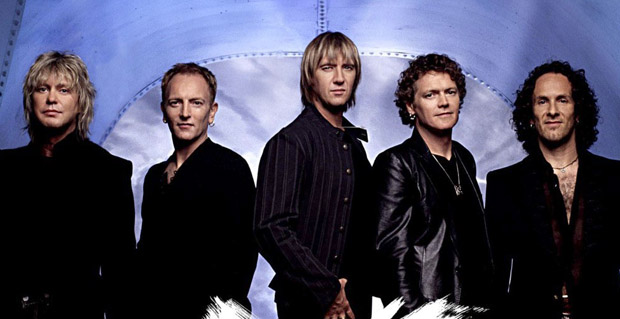
The guitarists in Def Leppard have never played on an album with the goal of putting their audience to sleep – until now.
Dreamin’ with Def Leppard, the first in the “Rock the Cradle” series, features Vivian Campbell and Phil Collen performing some of the band’s greatest hits with no distortion, no vocals and an accompaniment of piano, soft brush drumming and other delicately played instruments.
The effect is compelling, changing the vibe of the band’s music from polished hard rock to a crib-friendly combination of country, blues, jazz and folk.
In addition to rocking babies with classics, Campbell has played a handful of dates with Thin Lizzy, and Def Leppard is on the road to support their first live album, the double-CD Mirrorball.
Guitar World talked to Campbell about playing for babies, playing with Thin Lizzy and the new gear he’ll use for the current Leppard tour.
GUITAR WORLD: How did you end up playing on an album for babies?
My friend Tor Hyams happens to be the producer. His daughter and my elder daughter went to kindergarten together, and he lives in the neighborhood. He also produced the blues record I made six years ago [Two Sides of If].
Get The Pick Newsletter
All the latest guitar news, interviews, lessons, reviews, deals and more, direct to your inbox!
He told me he was doing a lullaby album and they were doing Def Leppard songs and it was all organic. He asked me if I wanted to play a few songs. As a favor to him, I said yes, absolutely. I didn’t know Phil was involved as well until after we were done.
You play on “Photograph, “Animal” and Stand Up.” How did you approach these songs in this context?
Obviously, I wanted it to sound nothing like Def Leppard because if you want your kids to go to sleep, you don’t want them to listen to the type of bombast we’re known for. This is much more organic.
I tried to bring more of my blues style to it, using a front pickup on a ’56 reissue Goldtop Les Paul with hum-canceling P90s and the tone rolled all the way off. I took the very same guitar to the George Lopez show the following week and it smushed when a speaker fell on top of it, so it’s currently in surgery.
Fortunately it wasn’t the neck. It was the cavity where the volume and tone controls are, and that got pushed in. I like my guitars to be kinda worn. I don’t like it when they’re all shiny.
How did playing on this album differ from what you do in a Def Leppard acoustic set?
We wanted even more of a mellow, clean sort of vibe. But I do think it’s a testament to anybody when their songs can be reinterpreted in such a way that they’re completely different yet recognizable. When the acoustic guitar is the primary instrument of a song, it takes on a different rhythmic feel because the rhythm of the acoustic is driving it, as opposed to the drums. We’ve done a version of “Armageddon It” that sounds like a country song and a version of “Pour Some Sugar on Me” that sounded like Bo Diddley.With this record, I played a lot of blues licks. Since the whole thing’s instrumental and there’s a guitar doing the lead vocal line, I wanted to play in the gaps so I wasn’t stepping all over the melody guitar.When you reinterpret a song, is it hard to get the original out of your head?It wasn’t difficult in this case because the songs were arranged so differently. And because I am so familiar with the vocal lines, it was actually pretty easy. I’m a big, big blues fan and the last several years I’ve really invested in the blues a lot, and I think my playing is getting better because of it – not necessarily better on a technical level, but certainly on a level of appropriateness.You have 10- and 12-year-old daughters. What kind of music did you used to play to put them to sleep?I insisted they listen to classical. I particularly liked Baroque-era music – Bach, Handel and Vivaldi. And I tempered it with a fair amount of Motown – Marvin Gaye, Sam Cooke, that kind of stuff.You have a new live album, Mirrorball. What gear did you use on that?It was recorded on different dates over two American tours in 2008 and 2009. I was using my standard Leppard rig, which I hadn’t changed in years – Les Paul and Marshalls JMP preamps, various rackmount effects units and Marshall and Mesa Boogie power amps, all though a Bradshaw switching system. I have made some changes, though, for this tour. I’ve gone to Engel amps, Engel cabs, Engel power amps and I’m experimenting with the Engel preamps. I’m hoping the Engels will give me a bit more flexibility. I love the Marshalls, but I find them a bit limiting in terms of the tonal palate. They tend to do one or two things very, very well, but I need a bit of more variety.You recently played shows with Thin Lizzy. What kind of different gear did you use for that?I went very organic with my rig. I bought a Mohave Scorpion 50-watt head specifically for that tour and a Mohave 412 cab. And I bought a Fulltone Tube Tape Delay, which is incredible sounding. In Leppard I have to use a wireless, but I don’t like what a wireless does to the guitar sound. With Lizzy, we were on a much smaller stage so I didn’t have to use a wireless. So I ran a Les Paul and used a cable and ran that to a Dunlop Hendrix Wah to an Angry Troll Boost pedal and into the front end of the Mohave. And the Mohave doesn’t have an effects loop but it has an adjustable line out level. So I took the line out of the Mojave and ran that to the front end of the Fulltone tape delay. And from the Fulltone I ran the output to a little Krohn 150-watt power base guitar amp, which powered a Marshal 412 cab, too. I had a dry cab and a wet cab set up, too, and it sounded so good – so much better than my Def Leppard rig.
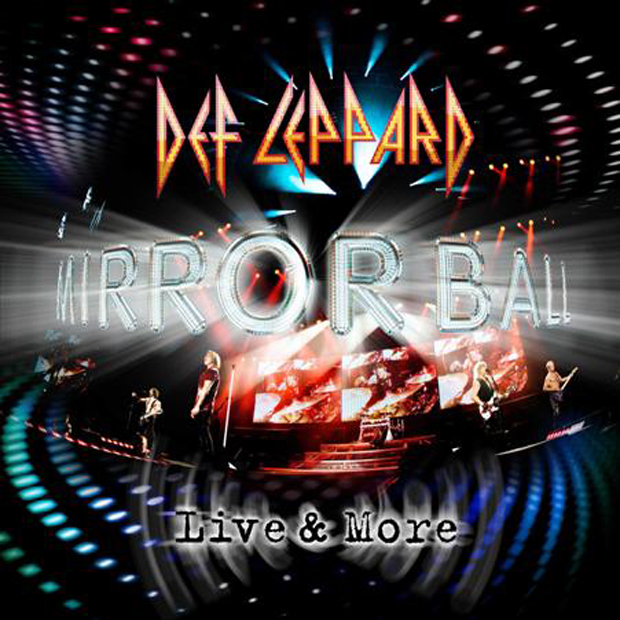
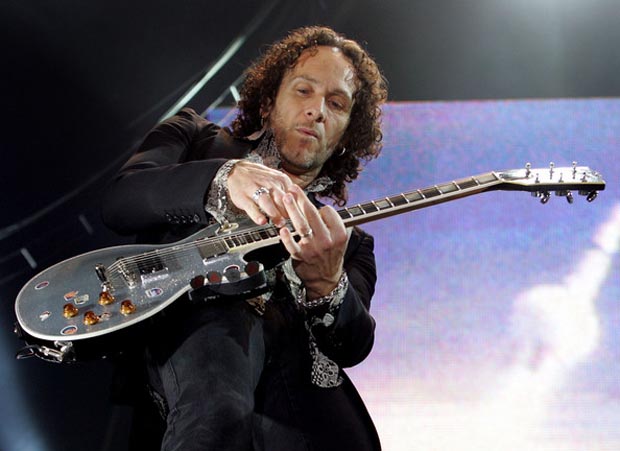
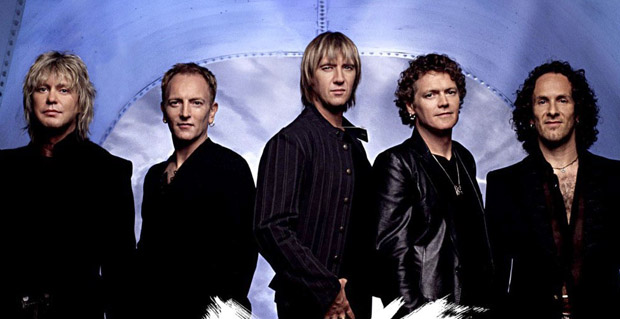
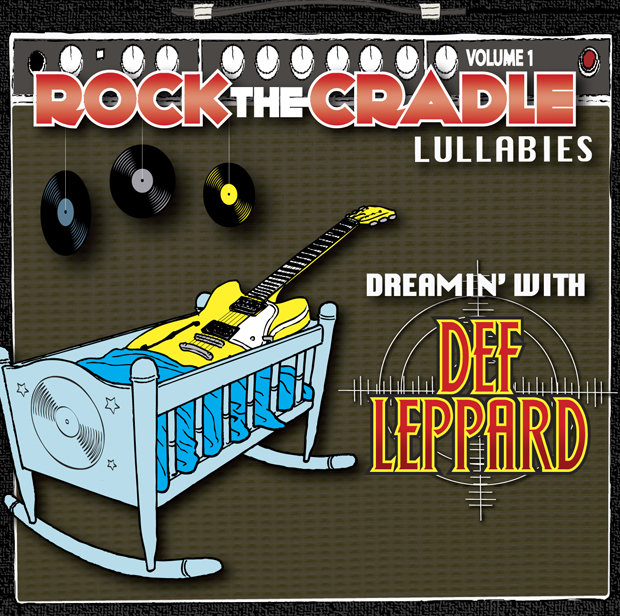
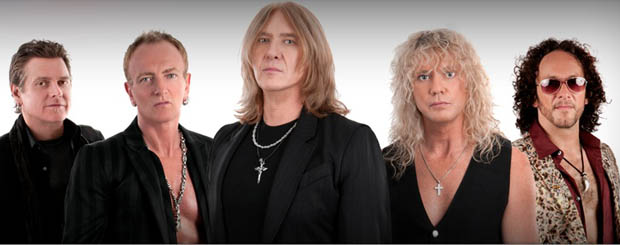
Jon is an author, journalist, and podcaster who recently wrote and hosted the first 12-episode season of the acclaimed Backstaged: The Devil in Metal, an exclusive from Diversion Podcasts/iHeart. He is also the primary author of the popular Louder Than Hell: The Definitive Oral History of Metal and the sole author of Raising Hell: Backstage Tales From the Lives of Metal Legends. In addition, he co-wrote I'm the Man: The Story of That Guy From Anthrax (with Scott Ian), Ministry: The Lost Gospels According to Al Jourgensen (with Al Jourgensen), and My Riot: Agnostic Front, Grit, Guts & Glory (with Roger Miret). Wiederhorn has worked on staff as an associate editor for Rolling Stone, Executive Editor of Guitar Magazine, and senior writer for MTV News. His work has also appeared in Spin, Entertainment Weekly, Yahoo.com, Revolver, Inked, Loudwire.com and other publications and websites.
"They said, 'We don't have a direction yet, but you got the gig!' I said, 'Well, let me think about it'": Yngwie Malmsteen on why he turned down UFO
“I loved working with David Gilmour… but that was an uneasy collaboration”: Pete Townshend admits he’s not a natural collaborator – even with bandmates and fellow guitar heroes









![[from left] George Harrison with his Gretsch Country Gentleman, Norman Harris of Norman's Rare Guitars holds a gold-top Les Paul, John Fogerty with his legendary 1969 Rickenbacker](https://cdn.mos.cms.futurecdn.net/TuH3nuhn9etqjdn5sy4ntW.jpg)
